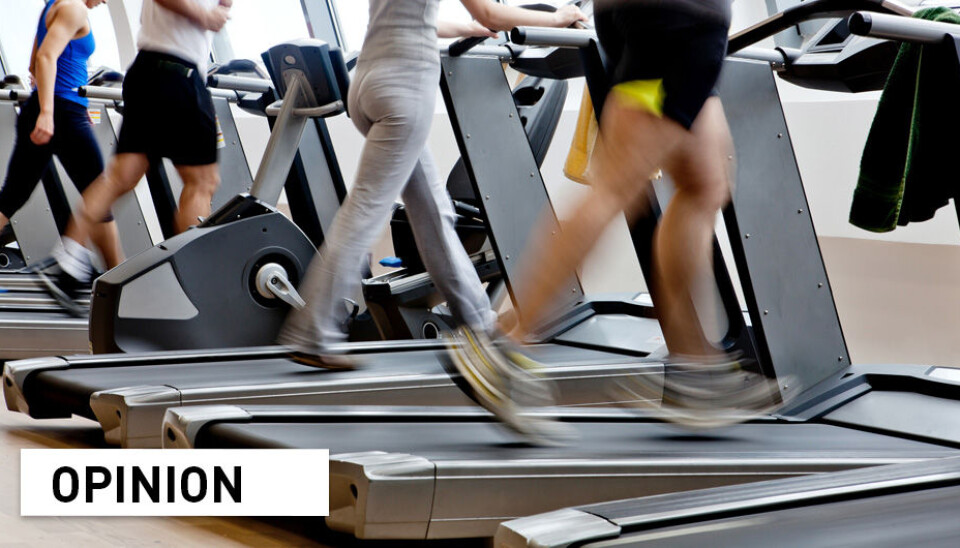Opinion:

Coronavirus and training in gyms: Misunderstandings about Randomized Training Trial
OPINION: Joar Vittersø has misunderstood the rationale, design and results of our randomized trial on re-opening of gyms in Norway, write the researchers behind a Norwegian study on the transmission of coronavirus in gyms.
This is a response to Joar Vittersø's comment Norwegian coronavirus “experiment” was misleading. People who train in gyms can infect each other with COVID-19.
There is no doubt that people who train at gyms can infect each other with COVID-19, or other respiratory infections for that matter. We have never claimed the opposite, as Vittersø is insinuating. People can be infected on buses, in grocery stores, at restaurants, schools or anywhere where people are in close contact with other people.
We hope that Vittersø agrees that there is a trade-off between the risk of disease by physical contact and the benefits of society activities such as schools, universities, and day care centers. The same applies to training facilities, which are important for health and wellbeing for many people. Thus, it is important to find the right balance between closures of important activities and the risk of virus transmission. Randomized trials provide the most reliable tool to ascertain such assessment of risk versus benefit.
The aim of our trial was to ascertain if there is increased risk of COVID-19 transmission with opening of gyms, provided strict measures against virus transmission. All gyms, which participated in the trial, implemented rigorous distancing measures of 1 meter for all activities and 2 meters for high intensity training, and thorough cleaning procedures.
Vittersø claims that there were no individuals with COVID-19 at the facilities during the study. We are uncertain how he can know this, because we did not test people for COVID-19 before or during the training. We tested participants after the 2-week training period, and one was positive. We are currently performing antibody testing in trial participants, and the comparative results in the training and no-training groups will provide information about previous COVID-19 disease in those who trained and those who did not. Results will be available for each participant on Aug 20, 2020.
Our trial was powered to detect an absolute difference of 1% in COVID-19 infection between the training and no-training groups. We anticipated that 1% of individuals in each group would be positive for COVID after the 2-week period (18-20 people in each group). The result was 1:0. This lower than expected COVID-19 infection rate in both groups may have been due to low background virus transmission in Oslo during the trial, or because people who go to gyms are healthy and adhere well to the hygiene and distancing measures we implemented. We do not know, and Vittersø does not know. As we have pointed out in the New York Times and in the preprint paper on MedRXiv, we are uncertain how the results would have been with more COVID in Oslo or with less distancing and hygiene measures at the gyms.
We are concerned by Vittersø’s request to burry research findings and not publish them. One of the most important features the medical research community has been emphasizing the past decade is reporting of clinical experiments. Transparent, immediate and complete clinical trial reporting regardless of results is a prerequisite for good clinical practice and should not be compromised.
Randomized trials have been the hallmark for testing new drugs and health interventions for more than 50 years. In all trials, there is potential benefit and potential harm, as there is in clinical practice. In the TRAiN study, as in other trials, the balance of anticipated benefits and harms is clearly laid out to all eligible participants and the trial was evaluated rigorously and approved by an independent ethical committee. We are not sure how Vittersø thinks new knowledge should be tested without clinical trials such as ours.
———
The authors of this opinion are all part of the TRAiN study group, Clinical Effectiveness Research, University of Oslo and Oslo University Hospital.
Share your science or have an opinion in the Researchers' zone
The ScienceNorway Researchers' zone consists of opinions, blogs and popular science pieces written by researchers and scientists from or based in Norway. Want to contribute? Send us an email!










